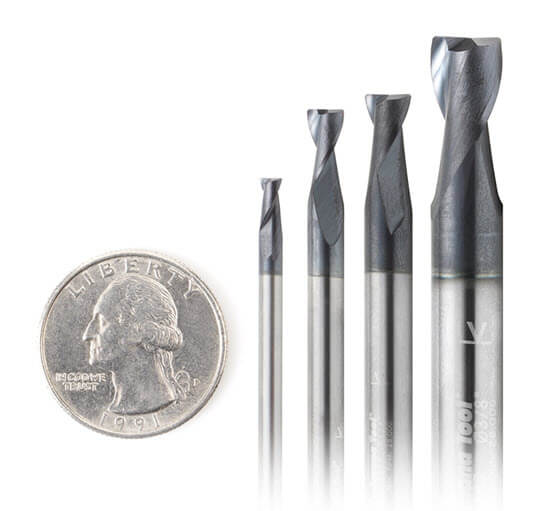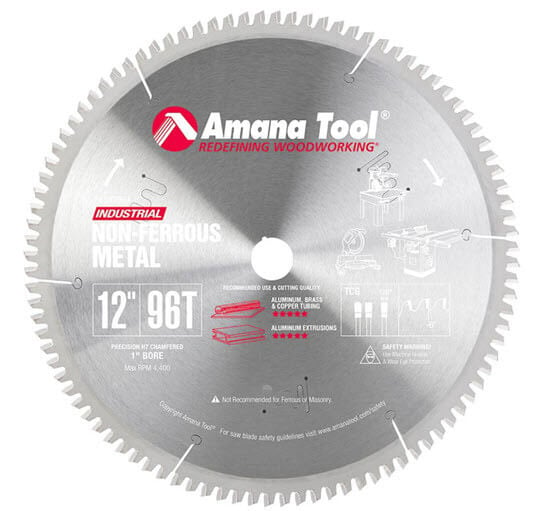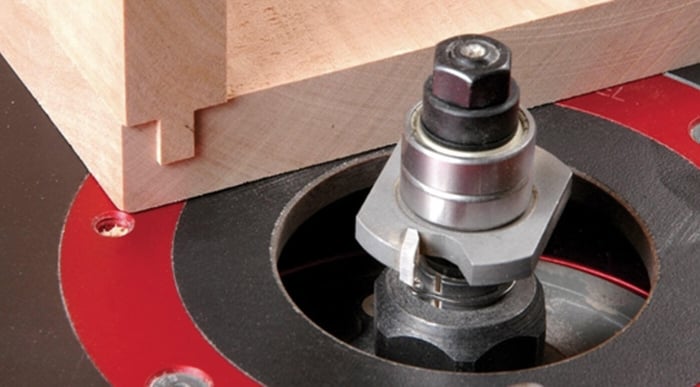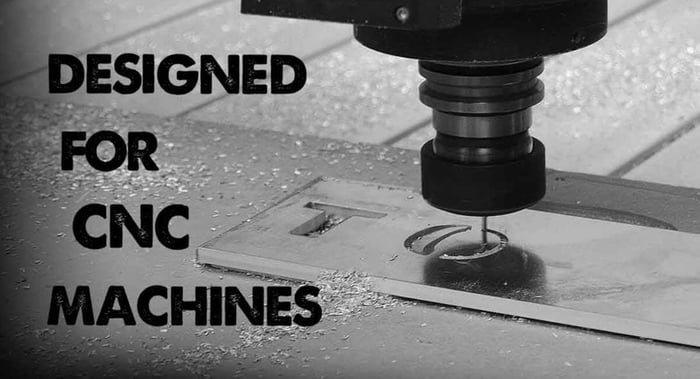
Tips for Working With Aluminum on Your CNC Router Table
Aluminum is used around the world in a variety of applications, from shipbuilding to kitchen utensils, due to its unique combination of properties like light weight, strength, corrosion resistance, and (relative) ease of fabrication.
It's that "(relative)" part we're here to talk about today.
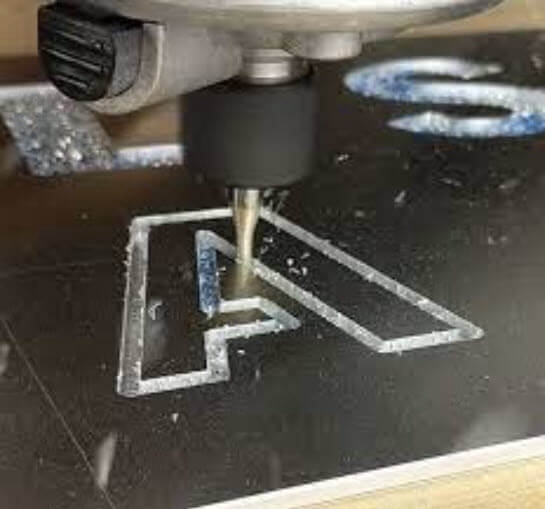
Aluminum-Cutting Bits Are Designed For CNC Machines
All metals have a smaller "sweet spot" - the range of feeds and speeds in which you're able to get the necessary chip load - than wood. Aluminum is even more finicky than, say, steel. You'd have to be a human machine to maintain the precise feedrate needed to avoid rubbing, overheating, chip-weld, and, yes, tool breakage.
Don't do it.

What Is Aluminum?
Aluminum is a relatively soft metal compared to many other common metals like steel, stainless steel, and titanium.
It has a moderate level of hardness, making it suitable for various applications where strength and durability are required but extreme hardness is not necessary.
Aluminum can be easily machined, cut, and formed using appropriate tools and techniques. But....
Aluminum is Sticky
Aluminum can "stick" to CNC router bits during machining due to a phenomenon known as chip welding or built-up edge (BUE). This occurs primarily when machining aluminum and some other metals and is a result of the combination of heat, pressure, and friction involved in the machining process. Here's how it happens:
- Heat Generation: When a CNC router bit cuts into aluminum, it generates heat due to the high-speed rotation and friction between the tool and the workpiece. This heat can cause the aluminum to soften and become somewhat ductile.
- Pressure and Contact: The CNC router bit exerts pressure on the aluminum as it cuts through the material. This pressure can cause the softened aluminum to deform and adhere to the cutting edge of the tool.
- Material Transfer: As the aluminum softens and adheres to the tool's cutting edge, small pieces of aluminum can weld or bond to the router bit's surface.
- Chip Formation: Ideally, when machining, chips of material should be cleanly removed from the workpiece. However, in cases of chip welding, the chips may not break away cleanly but can become attached to the tool, leading to poor surface finishes, increased tool wear, and reduced machining efficiency.
To prevent aluminum from sticking to CNC router bits and experiencing chip welding, machinists often use various techniques and strategies, including selecting the right router bits, adjusting cutting speed and feed rate, and proper chip evacuation.
Regularly inspecting and cleaning router bits to remove any built-up edge or material residue can help maintain their cutting effectiveness.
10 Tips for Working with Aluminum
- Choose the Right Cutter: Use router bits specifically designed for cutting aluminum. These cutters have a geometry that allows for effective chip evacuation and reduces the risk of the material sticking to the bit.
A router bit with more flutes has less space for chip evacuation, so choose a bit with 1 or 2 flutes. A spiral up-cut bit provides good surface finish and efficient chip management.
Furthermore, Amana aluminum-cutting router bits have a ZrN (Zirconium Nitride) coating over a base of the highest quality sub-micrograin carbide, have a special proprietary edge processing system and feature a super high polished cutting edge with a unique “mirror finish”, resulting in clean cuts, less chance for chip re-welding, a superior surface finish and a longer tool life. The spiral ‘O’ flute sharpening/finishing process increases feed rates, allowing for more linear feet routed in less time.
They are simply the best bits for cutting aluminum. - Optimize Cutting Speeds and Feeds: Aluminum requires different speeds and feeds compared to materials like wood or plastics. If your speeds are too slow, you risk gumming up the tool, but too fast can lead to excessive heat and tool wear. Consult the router bit manufacturer's guidelines for recommended speeds and feeds.
- Use a Suitable Lubricant/Coolant: Applying a coolant or lubricant can prevent the aluminum from sticking to the cutter and help dissipate heat. There are specific coolants designed for aluminum, but simple solutions like misting with water or using an air blast can also be effective.
- Secure Clamping: Ensure that the aluminum is securely clamped down. Aluminum is softer than steel and can bend or warp if not adequately supported.
- Shallow Passes: Make multiple shallow passes instead of a single deep cut. This approach is easier on your machine and tool, and it helps to manage heat and chip removal.
- Watch for Chip Buildup: Aluminum chips can clog up the cutter and affect the quality of the cut. Regularly clear chips from the cutting area, and consider using a dust collection system.
- Use a Stiff and Stable Machine: Ensure that your CNC router is robust and stable. Any flex in the machine can lead to inaccuracies when working with metals.
- Be Mindful of Tool Wear: Aluminum can be abrasive. Regularly check your router bits for wear and replace them as needed to maintain cut quality and precision.
- Safety First: Always wear appropriate safety gear, including eye protection and hearing protection. Be mindful of the sharp edges on cut aluminum, as they can easily cut skin.
- Test Cuts: Before starting on your final piece, make test cuts on scrap pieces of aluminum. This allows you to adjust your settings and approach without risking your main material.
Remember, each CNC router and aluminum grade can behave differently, so experimentation and adjustments based on your specific setup are often necessary.

Special Challenges of Aluminum
- Softness and Ductility: Aluminum is softer and more ductile compared to other metals like steel. This can lead to issues like material sticking to the cutting tool, or the tool getting gummed up. This requires careful selection of cutting tools and operating parameters.
- Heat Sensitivity: Aluminum conducts heat efficiently, which can be a double-edged sword. On one hand, it helps dissipate heat from cutting operations, but on the other hand, the tool and workpiece can get too hot, affecting the cutting process and potentially damaging the material.
- Chatter and Vibration: Due to its relatively soft nature, aluminum can be more prone to chatter and vibrations during the cutting process. This can lead to poor surface finish and inaccuracies in the final product. A heavier and stiffer CNC machine will mitigate this, but whatever machine you are using, take the time to get your feeds and speeds right.
- Chip Management: Aluminum tends to produce long, stringy chips during machining. These chips can entangle the tool or clog the machine, affecting the cutting process and potentially leading to tool breakage.
- Surface Oxidation: Aluminum can form a thin oxide layer on its surface, which is harder than the underlying material. This can wear out tools more quickly and affect the quality of the cut.
- Tool Selection: Standard tools used for woodworking or plastic are not suitable for aluminum. Specialized cutting tools designed for non-ferrous metals are required.
- Tendency to Warp: When machining thin aluminum sheets, there's a risk of warping due to the material's relatively low stiffness and the heat generated during the machining process.
- Chemical Reactivity: Aluminum can react with certain chemicals used as coolants or lubricants, which can lead to corrosion or other undesirable effects.
To effectively work with aluminum on a CNC router, it’s important to address these challenges by using the appropriate tools, cutting speeds, feed rates, coolants, and chip evacuation methods. Regular tool maintenance, using a CNC machine with sufficient rigidity, and applying proper clamping and supporting strategies can also mitigate these difficulties.



